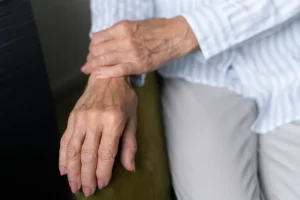 Parkinson’s disease is a progressive neurological disorder affecting millions worldwide. While there is no cure, understanding its symptoms, prevention strategies, and available treatments can help individuals manage the condition effectively.
Parkinson’s disease is a progressive neurological disorder affecting millions worldwide. While there is no cure, understanding its symptoms, prevention strategies, and available treatments can help individuals manage the condition effectively.
Symptoms of Parkinson’s Disease
Parkinson’s disease is characterized by a range of symptoms, which may include:
- Tremors. Involuntary shaking or tremors, often starting in the hands or fingers.
- Bradykinesia. The slowness of movement and difficulty initiating movements.
- Muscle Rigidity. Stiffness and inflexibility in the muscles and cause discomfort.
- Postural Instability. Difficulty maintaining balance and an increased risk of falls.
- Impaired Coordination. Difficulty with fine motor skills, like buttoning a shirt.
- Speech Changes. Slurred speech or a softer voice.
- Reduced Facial Expression. A fixed or mask-like facial expression.
- Non-Motor Symptoms. These may include depression, anxiety, sleep disturbances, and cognitive changes.
Prevention of Parkinson’s Disease
While the exact cause of Parkinson’s is still unknown, some lifestyle factors may reduce the risk:
- Exercise Regularly. Engaging in physical activity can help maintain brain health and reduce the risk of Parkinson’s.
- Balanced Diet. Eating a diet rich in antioxidants and omega-3 fatty acids may be protective.
- Avoiding Toxins. Minimize exposure to environmental toxins and pesticides.
- Stay Mentally Active. Engage in cognitive activities like puzzles or learning new skills.
- Moderate Caffeine Intake. Some studies suggest that caffeine consumption may lower the risk.
- Adequate Sleep. Prioritize good sleep hygiene and aim for quality rest.
Treatment Options
While there is no cure for Parkinson’s disease, various treatments can help manage its symptoms:
- Medications. Levodopa, dopamine agonists, and other medications can help control motor symptoms.
- Physical and Occupational Therapy. These therapies can improve mobility and daily living skills.
- Speech Therapy. Speech therapy can help with communication difficulties.
- Deep Brain Stimulation (DBS). DBS is a surgical procedure that can help manage symptoms in some cases.
- Lifestyle Modifications. Regular exercise, a balanced diet, and stress management can improve quality of life.
Support and Care
Parkinson’s disease can be challenging, but a strong support network can make a significant difference. Support groups, counseling, and assistance from family and caregivers can provide emotional and practical support.
Parkinson’s disease is a complex condition that affects movement and can have a profound impact on a person’s life. While there is no cure, early diagnosis, and appropriate management can help individuals lead fulfilling lives despite the challenges.
If you or a loved one is experiencing symptoms of Parkinson’s disease, it’s essential to consult a healthcare professional for proper evaluation and guidance on treatment and support options.
Picture Credit: Freepik
